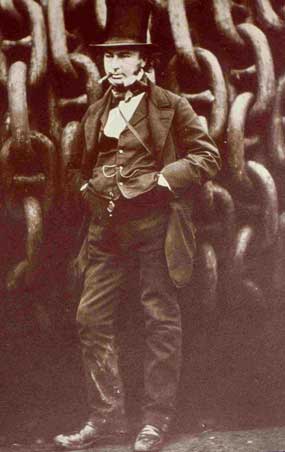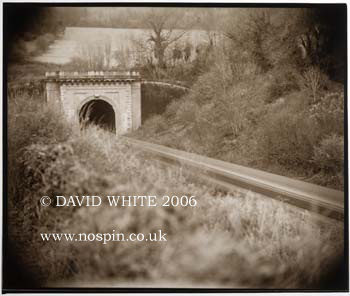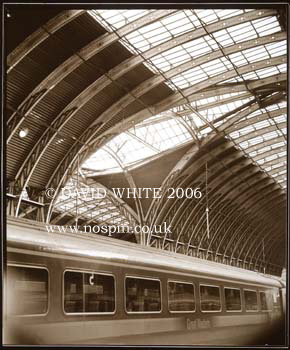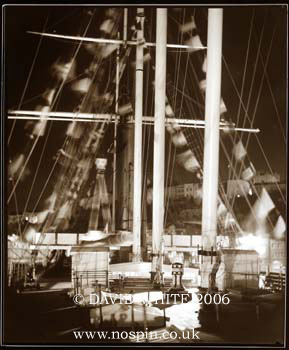|
|



| 'Deserving
of Wonder' – The triumphs of Brunel |

David White
has been working as a professional photographer since 1988, regularly
working with Marie Clare, as well as the Guardian, the Independent and
Elle magazine. During this project, David “wanted
to find out technically how Robert Howlett photographed Brunel in front
of the Great Eastern… in 1857”.
David produced a series of
photographs of Brunel’s greatest engineering
triumphs across the British Isles, using the same unique 19th century
camera and lens combination as Robert Howlett used for the classic ‘chains’ shot
of Brunel alongside the ss Great Eastern (below).
The photographs were exhibited in the Central Library in Bristol, and
received national media coverage.

David
researched the technical specification of the camera fully in order to
create authentic images, which were technically, as well as visually,
similar to Howlett’s.
The camera itself was constructed by a craftsman
in Cheltenham, and built from mahogany and brass; the lens used was
an 1855 portrait lens, with a focal length of 18 ¾” which
David found with assistance from various museums and collectors. Howlett
had used something very similar, in a twin sliding box camera with
a 12” x 10” glass
plate, and wet glass plate collodion process to capture the image, which
was printed onto albumen paper.

Box Tunnel.
After some consideration, David decided
not to follow the processes of Howlett, as the chemicals involved had
killed Howlett aged just 27! Instead, David chose a 12” x 10” film,
which in itself is hard to source.
Aside from the technical difficulties
faced in building the camera and sourcing the component parts, chemicals
and paper, it was also huge, unwieldy and difficult to use.
“There are seemingly 100 ways to mess up with such a simple camera,
so every potential image had to be approached slowly and carefully. This
camera cannot be rushed. I had to be almost Zen-like in my respect of
it. In many ways the camera dictated my approach to the subjects”. David said.

Paddington Station.
David’s
exhibition featured 20 images, including the Royal Albert Bridge, Paddington
Station, Box Tunnel and Star Cross pumping station in South Devon. David
travelled to each of the locations, with the brass and mahogany camera
in tow. Due to the complexities of the camera, it took several hours to
get one image in some cases, as well as requiring very long exposures assisted
by candle-power torches.

ss Great Britain.
David said of the prints, “They are possibly the most beautiful
prints I have ever made. In fact, they are, and I have been taking photos
for 18 years”.
He continued:
“I have learnt many things from this delicious project. My respect
for Brunel before inception of photography was high. Now it is stratospheric….
It was his determination and relentless drive that drove me to push myself
as far as I could go, both physically and aesthetically with the camera”.
David’s photographs can be viewed at www.nospin.co.uk/brunel/brunelwebgallery.
Links
www.nospin.co.uk
Masthead photography: Mark Simmons.
|
|
